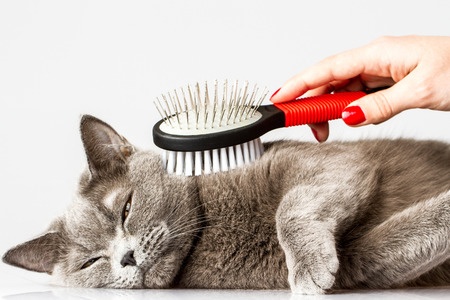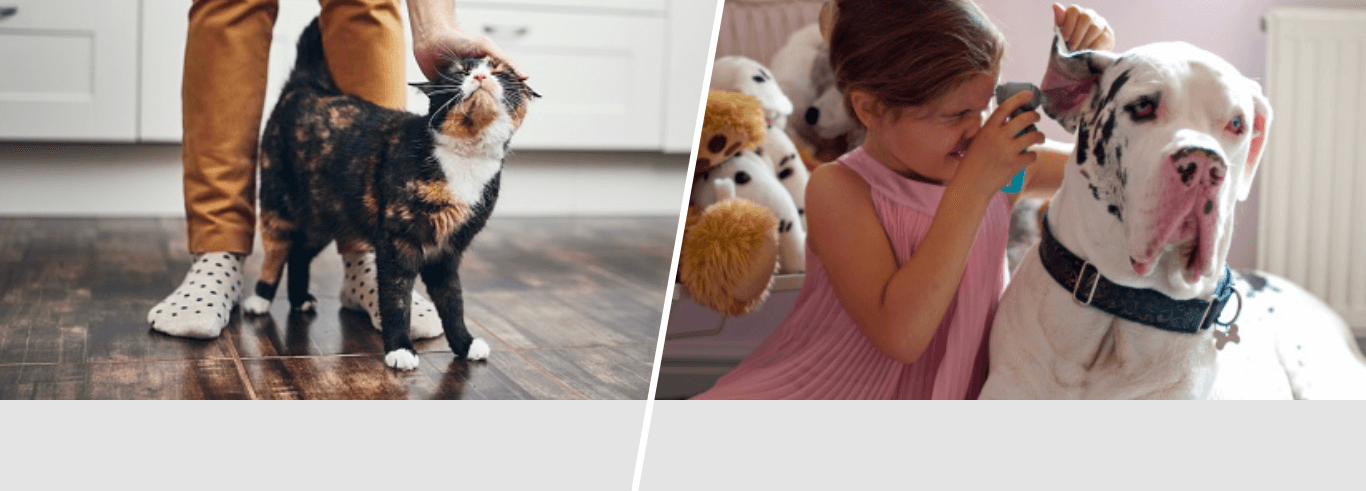A guide to grooming your cat
Left to themselves, cats will manage perfectly on the sprucing up front but help from its human companion will assist on all sorts of levels.
Firstly, when a cat grooms itself, backward-pointing spines on the tongue pick up dirt and moulting fur. This can create fur balls which the pet should eventually cough up. Regular grooming by its owner will reduce this aggravation by ridding the coat of loose fur.
Grooming a cat also stimulates circulation which improves muscle tone greatly. One important advantage of grooming a cat is the opportunity this gives the owner to inspect their cat regularly for any signs of ill health such as infected eyes or ears, flea, mite or tick infestation.
Grooming is an activity that any cat will soon come to enjoy as, if it is done carefully and gently, it is an act of love and care.
Some felines are a little hesitant to take part at first but often adopting a “little at a time” approach will gradually see them become more open to the idea.
If you find your cat is nervous or seems to be in distress, be gentle and don’t pursue the session beyond a few minutes. Each time spend a few moments more, until they realise there’s nothing to fear – they will hopefully grow to like it.
Lots of cats love to be pampered and need no extra coaxing from their owners!
In addition to regular grooming at home, it may be advisable for you to take your cat into a professional grooming salon every now and again. This is particularly the case for long haired animals, where trained professionals can carry out more thorough routines.
But what are the main things you should be doing at home?
Brushing
Combing and brushing is effective at removing dead hairs, which can otherwise build up and lead to your cat developing a hairball after washing. It also helps to keep their coat in lovely condition and although it’s harder to see the results underneath all that fur, regular brushing makes sure their skin stays healthy too.
Begin by combing, using a fine come for short hairs and a thicker comb for long hairs. Start at the head and work your way down their body, section by section. Always follow the direction of the hair; going against the direction of growth is uncomfortable for the cat and not as effective.
If you come across an especially troublesome knot or matted area, gently comb it through, or if it’s really stubborn, cut it away with a small pair of trimming scissors.
After this, go all over with a fine flea comb in case there any are lurking. To finish, use a soft brush from head to tail, again moving in sections. If by this stage your cat has become grouchy, try a grooming glove. These are gloves with short bristles that allow you to stroke your cat as normal but secretly give them a nice brush!
Trimming and bathing
It’s also advised that predominantly indoor cats should have their nails trimmed on a regular basis. If you’re not too comfortable with the idea, get a professional to do it for you. You can also provide plenty of scratching posts to aid natural trimming.
The need to bathe a cat is rare but can be necessary if someone in your home is allergic or they’ve managed to get themselves exceptionally muddy.
If you must give them a bath then be sure to only use feline-friendly products and place a non-slip mat at the bottom of the basin to ease the process. Make sure the water is lukewarm and remember that most cats do not like water and therefore may be reluctant to get in the tub. Keeping the water level low and using a central spray from a shower head or hose may help.
Clipping
Many cats will claw at their owners when you try to trim their fur. It’s nothing personal, it’s a defensive reaction. If you clip the claws before you start, you’ll reduce the damage that can be done.
Your clippers will make a noise. Avoid scaring your cat by turning them on right next to him or her. Turn them on a distance away and gradually move closer.
When buying new clippers chose a quiet set. Make sure you have a set that are specifically for cats and start with the longest blade setting – such as a No.10.
You can always trim shorter later if desired.
Happy Cats
If a cat is not enjoying being groomed then it will let its owner know through hissing, or growling.
It’s important to stop grooming if your cat shows any signs of discomfort and you should always end a productive grooming session with praise and perhaps a treat. This will help reinforce the process as a positive experience for a pet, making them more comfortable with it in the future.
Keeping your cat groomed is important, as is protecting it with Argos Pet Insurance provided by Pinnacle Insurance Ltd. Explore our cat insurance policies today.
 Sorry, our lines are now closed
Sorry, our lines are now closed




